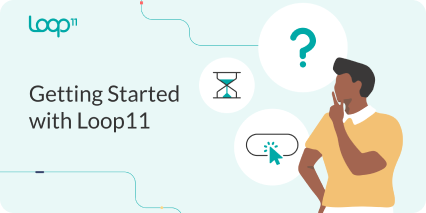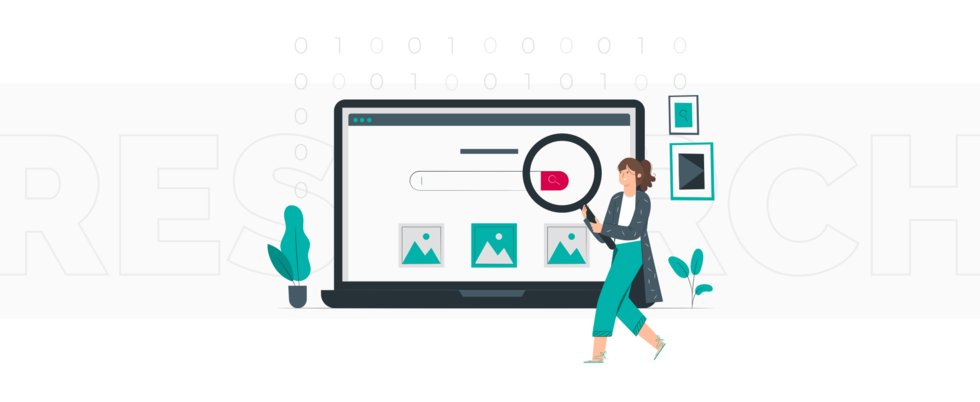When it comes to user design, user experience (UX) is everything. What good is a visually appealing and highly functional digital platform if it doesn’t resonate with your target audience? Conversely, a website, digital app, or e-commerce platform that engages visitors generates leads and converts sales.
Enter artificial intelligence (AI), a game-changer in business across all industries. It’s one of the most advanced technologies today, specifically used to enhance user interactions. However, how can you leverage AI-driven insights to improve your user engagement in 2025?
Read on to find out the answer to this crucial question.
The Use of AI for User Engagement
Artificial intelligence (AI) is a game-changer in business. By simulating intelligence, AI allows digital tools and computer systems to think and work like humans. That’s why companies and organizations invest in this modern technology.
According to Statista, the global AI market could grow from $305.90 billion in 2024 to $738.80 billion by 2030 at a 15.83% compound annual growth rate (CAGR). This market growth is due to increasing awareness of AI capabilities, the adoption of digital tools, and the use of online services.

Statista also cites that AI’s market growth has triggered the development of AI robotics, machine learning, natural language processing, generative AI, and computer vision. Let’s tackle how some of these subset AI features work for user engagement in business:
- Natural language processing (NLP): NLP lets computer technologies and digital tools understand data and communicate in human languages. For instance, think of customer service with AI-powered chatbots and virtual assistants as well as self-service portals like interactive voice response (IVR) systems and frequently asked questions (FAQs).
- Machine learning (ML): ML learns from data sets and decides according to patterns or trends. Consider AI features, such as product recommendations for e-commerce customers, lead segmentation for prospect engagement, and predictive analytics for forecasting user interactions.
- Robotic process automation (RPA): RPA uses AI-powered digital tools to perform tasks with minimal human input. Automated software speeds up processes and gets rid of manual work to increase efficiency and productivity in user interactions. Acumen and Research Consulting forecasted the global automation software market to grow from $19.9 billion in 2021 to $76.4 billion by 2030 at a 16.5% CAGR.

It’s abundantly clear how business owners, digital marketers, and even web designers can leverage AI to enhance UX. However, learn how to use its data insights to improve user engagement in the next section.
How To Leverage AI-driven Insights for Improving User Engagement
AI technology can transform your business in unimaginable ways. However, using data insights to improve your UX is the key to success. These AI-generated insights help you streamline your business operations and optimize user interactions.
Ultimately, AI-driven insights guide you in achieving your company goals—on top of which is boosting user engagement. Here’s how:
1. Automate tasks for user engagement strategies
Task automation is best for implementing your engagement strategies. AI-powered tools can automate various functions, helping your team become more efficient in interacting with users on your platforms.
Not only that, but according to Deloitte, the top three potential benefits of intelligent automation adoption are increased productivity (73%), cost reduction (60%), and improved accuracy (44%).

Below are user engagement functions to automate and leverage data insights:
- Content creation: Allow generative AI (genAI) tools to assist you in creating content, whether blog posts, case studies, or advertising copies.
- Email outreach: Let genAI help you draft effective emails and automate email processes, such as email sequencing and follow-ups.
- Social media engagement: Use genAI to post interactive content and engaging captions on social media channels like Facebook, Instagram, or LinkedIn.
- Customer service: Utilize AI-powered technologies to assist your customers, whether AI-powered assistants or self-service tools.
- User feedback loop: AI technology can help you use data and feedback to shape UX. The goal is to improve the customer experience (CX) for solid engagement.
Grant Aldrich, Founder of Preppy, emphasizes the power of automation for seamless UX. Through AI, their company offers 24/7 support to students enrolled in their online courses.
Aldrich explains, “Automation involves simplifying processes while enhancing the user experience. By leveraging AI, businesses can provide consistent, around-the-clock support and improve engagement strategies. Ultimately, it’s a practical way to boost efficiency and ensure users feel valued.”
2. Employ AI to analyze sentiments and predict user needs
Rodger Desai, CEO of Prove, recommends using AI-driven insights to improve user interactions. He claims that AI tools aid in identifying and understanding user feedback and needs. He suggests employing the two AI-powered methods to do this:
- Sentiment analysis entails using AI tools to uncover user sentiments in online content, such as reviews and customer feedback. These data insights help improve user interactions daily.
- Predictive analytics involves utilizing AI-driven insights to forecast user actions in the future. These information pieces assist you in engaging with customers and achieving business objectives.
Desai shares, “AI allows businesses to go beyond surface-level interactions by analyzing user sentiments and predicting their needs. With tools like sentiment analysis and predictive analytics, companies can anticipate what users want and deliver solutions proactively. It’s a smarter way to build trust and lasting relationships.”
3. Personalize content with AI and optimize its delivery
Online users have become highly critical and selective in their digital consumption. They only digest pieces of content that resonate with them. So, producing and publishing relevant and valuable content is the best way to engage with them—personalization is key!
That said, AI could fill gaps in UX design and help create personalized content that engages users. Here’s how it works:
- Content personalization: AI-powered analytics tools can help you unravel user needs, interests, and preferences. You can then use these AI-driven data insights to align your content strategies with user needs. Finally, genAI tools like ChatGPT can assist you in personalizing content meant for your target audiences.
- Content delivery: AI can automate content distribution, whether via your website, email, social media, or SMS (text). Once you have your content in place, you can use AI-powered tools or automated software to schedule and publish it regularly.
Brooke Webber, Head of Marketing at Ninja Patches, highlights the value of AI for content personalization and distribution. However, she suggests using AI tools not necessarily to generate content but to polish it.
Webber shares, “AI is a powerful tool for refining and personalizing content to truly resonate with your audience. You can use AI to understand user preferences and ensure your content is spot on while automating delivery to keep everything running smoothly. It’s not about creating content with AI, but making what we already have even more relevant and engaging.”
4. Offer AI customer support and self-service options
Stanislav Khilobochenko, VP of Customer Services at Clario, suggests capitalizing on AI for customer service. He highlights how AI technology allows you to offer AI-assisted customer support and self-service options. He believes that AI is reshaping the web and mobile user experience.
- AI-powered customer service: It’s easy to see users or customers get assisted by AI bots. Think of AI-powered chatbots answering basic questions on every business website. Consider AI-assisted virtual assistants (VAs) helping customers with various inquiries, issues, and concerns.
- Self-service portals: AI technology has paved the way for self-service options exclusively for users or customers. IVR systems, FAQs, and knowledge bases are perfect examples of these options. These enable users or customers to find answers to their questions or solutions to their problems.
Khilobochenko cites, “AI is transforming how we support customers by making help available 24/7. You can use AI-powered chatbots and VAs to provide instant responses, while self-service options like FAQs and knowledge bases empower users to find solutions on their own. It’s all about giving customers more control and faster support.”
5. Use AI insights for data analysis, forecasting, and reporting
AI has turned fiction into a reality. As mentioned, ML, a subset, can learn from datasets and make decisions without human intervention. You can use this technology to generate data insights and apply them to the following functions:
- Data analysis is the process of analyzing information to make informed business decisions. AI tools can provide insights into user interactions and employ effective engagement strategies.
- User forecasting entails predicting user behavior on websites and other digital platforms. AI tools offer data insights that can help you manage the volume of users, provide enough support, and interact with them strategically.
- Business reporting involves analyzing data and generating reports. AI tools can analyze insights and report data efficiently and accurately, helping you make informed business decisions and strategies.
Michael Nemeroff, Co-founder and CEO at RushOrderTees, advises using AI-driven insights for data analysis, forecasting, and reporting. “AI has really changed the game when it comes to making smarter decisions. This technology lets you get clear insights into user behavior and fine-tune their strategies. It’s all about letting AI do the heavy lifting so you can focus on making better, more informed moves.”
Key Benefits of Using AI-driven Insights for User Interactions
AI proves beneficial for businesses of all sizes. That’s why about 80% of leaders use this technology for business strategies and decisions. Specifically, they rely on AI-driven insights to streamline user interactions and improve the overall UX.

Take it from Lifei Chen, founder of buysmart.ai. His e-commerce business harnesses the power of AI to offer his target customers the best AI-powered deals.
Chen says, “AI-driven insights are a game changer for businesses looking to enhance user interactions. We use AI to deliver highly personalized deals, streamline engagement, and ensure a seamless user experience. It’s not just about technology—it’s about creating smarter, more scalable ways to connect with our customers.”
He shares the benefits of using AI-driven insights for user engagement:
- Efficient engagement processes: AI takes the hassle out of connecting with users through the power of RPA for business interactions. It’s like having a backstage crew making everything run smoothly while putting users in the spotlight. Automation is key!
- Highly personalized content: AI turns guesswork into precision by serving content that hits just right for every user. Think of it as a digital concierge, delivering precisely what someone didn’t know they needed at the perfect moment. Personalization is the answer!
- Data-driven decision-making: Using AI for UX research unlocks a treasure trove of user behavior insights. It helps you spot hidden patterns and make solid decisions backed with reliable information. It’s safe to say that data insights hold power!
- Enhanced user experience: AI insights aid in improving the user experience on your mobile app, website, and/or other digital platforms. These help you tailor every click, swipe, and tap to turn clunky interactions into a smooth user journey. AI enhances UX!
- Ensured business scalability: With AI technology, growing your business feels less like a juggling act and more like a well-oiled machine. It lets you smoothen your operations, deal with more users, and achieve bigger goals. If anything, AI helps scale your business up and down!
Final Words
The power of AI for user engagement is undeniable, whether for your website, digital app, or e-commerce platform. Not only does it effectively engage users but also generates leads and convert sales for your business. However, leverage AI-driven insights to boost your user interactions on the platform.
That said, follow our practical tips and steps above for improving user engagement. Consider automating your tasks, personalizing your content, and offering AI-assisted customer support. Finally, leverage AI for data analysis, forecasting, and business reporting.
Remember, AI offers solid insights to help you achieve your goals—from boosting user engagement to achieving business scalability!
Looking to improve your user engagement with AI-power insights? Harness the power of Loop11 for data-driven user design, testing, analysis, and more. Sign up for an account today for a free trial!
Whenever Maya has a free minute, she masters new languages or scrolls through hilarious cat pics (what else could you expect from a cat lover?).
- Improving User Engagement with AI-Driven Insights in 2025 - January 29, 2025
![]() Give feedback about this article
Give feedback about this article
Were sorry to hear about that, give us a chance to improve.








